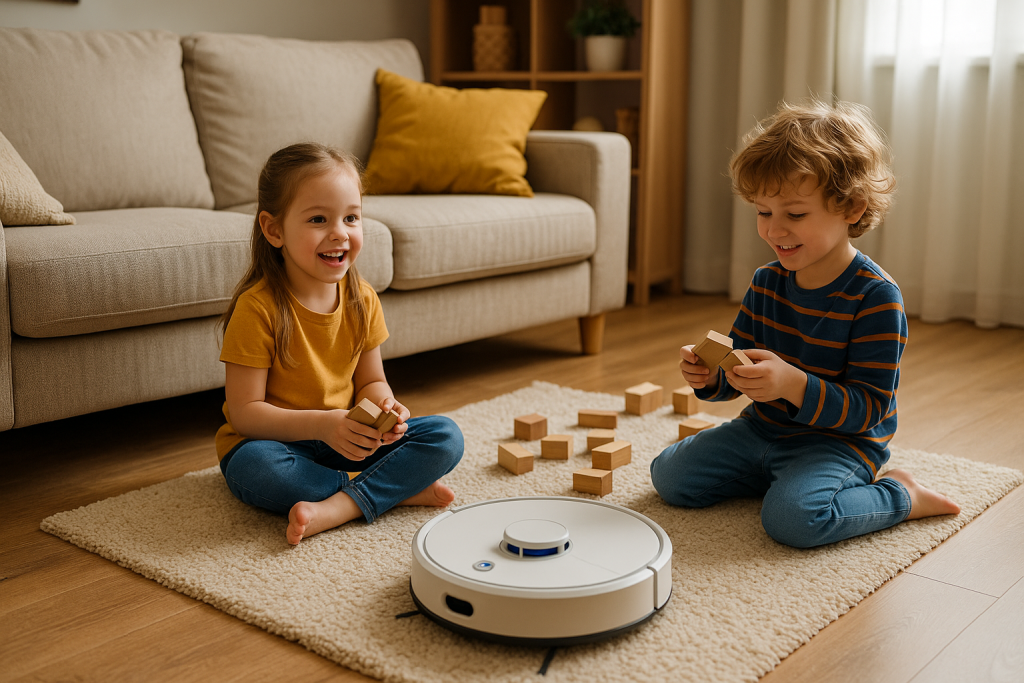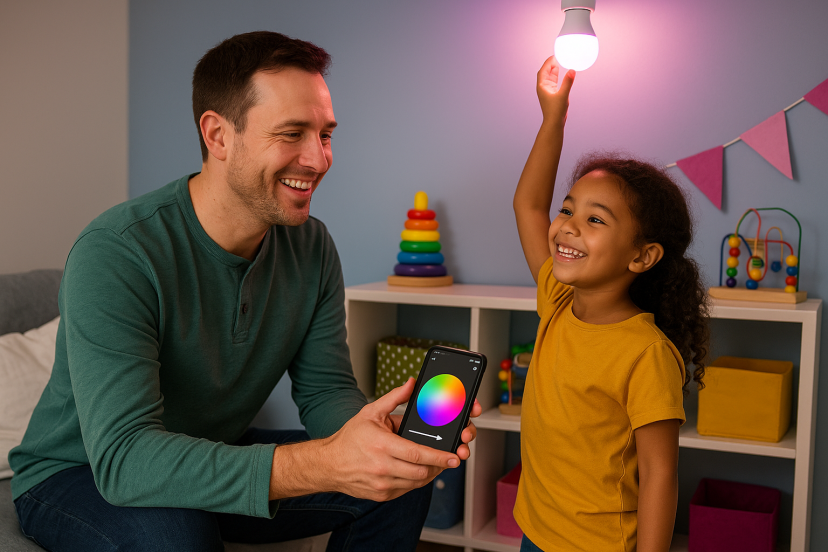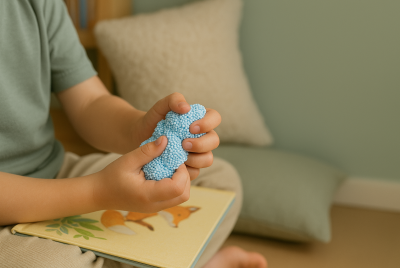Kid-Friendly Smart Home: Safe, Fun, and Simple Tech for Families
We may earn a commission for purchases made using our links. Please see our disclosure to learn more.
Thinking about creating a kid-friendly smart home? You’re in good company. More families are turning to smart technology—not just for convenience, but to help their children feel safer, happier, and more engaged. From voice assistants ready to answer curious minds, to cameras that give you peace of mind during playtime, modern households are adopting smart solutions that genuinely make a difference.
But transforming your space isn’t only about adding the latest gadgets. It’s about building an environment where kids can grow, learn, and feel secure, while parents enjoy a little extra reassurance. Let’s dive into what truly makes a smart home kid-friendly and how you can get started with your own family-friendly upgrades.
What Makes a Smart Home “Kid-Friendly”?
At its heart, a kid-friendly smart home is all about blending safety, fun, and learning. The goal is to use smart devices to keep kids protected, encourage healthy routines, and make daily life simpler for the whole family. Still, it’s important to find the right balance—giving kids positive experiences with technology while parents stay confidently in charge.
A well-designed kid-friendly smart home will:
- Make safety the top priority with parental controls and secure tech
- Streamline everyday routines for parents and children alike
- Inspire curiosity and creativity without becoming overwhelming
- Adapt as your kids grow and your family’s needs evolve

Essential Kid-Friendly Smart Home Devices
Ready to get started? Here are the top smart devices that make life easier—and safer—for families with kids:
1. Smart Speakers and Displays
Smart speakers like the Amazon Echo Dot Kids are designed for little ears and big imaginations. They can read stories, play music, answer questions, and even help with homework. Look for models with parental controls and kid-safe content filters.
Recommended:
2. Parental Controls and Smart Plugs
With parental controls, you set screen time limits, filter content, and manage which devices kids can use. Smart plugs make it easy to turn off devices at bedtime or set schedules for TVs and gaming consoles.
Recommended:
3. Security Cameras and Doorbells
Indoor cameras let you keep an eye on playrooms or nurseries, while smart doorbells show who’s at the door—without opening it. Many offer privacy settings so you’re always in control.
Recommended:
4. Smart Lights and Nightlights
Set the scene for playtime, bedtime, or story hour with voice-controlled smart lights. Smart nightlights give a comforting glow and can be set to turn off once kids fall asleep.
Recommended:
5. Robot Vacuums and Kid-Safe Appliances
Robot vacuums handle crumbs and spills so you can focus on play. Smart appliances like air purifiers and humidifiers can be controlled remotely—making your home healthier and easier to manage.
Recommended:
How to Set Up a Smart Home With Kids in Mind
Building a smart home with children starts with planning. Think about your family’s routines:
- Which rooms need voice assistants or smart lights?
- Where do you need extra security (front doors, play areas)?
- What devices should kids be able to control, and which should be parent-only?
Tips for a smooth setup:
- Start small. Add one device at a time and teach kids how it works.
- Make sure to use strong, unique passwords for all your devices and regularly update firmware to keep your kid-friendly smart home secure.
- Set up guest networks or user profiles for kids.
Teaching Kids Smart Home Safety and Digital Etiquette
Smart tech is amazing, but it’s only as safe as the habits you build. Teach kids the basics of digital etiquette:
- Always ask before changing settings or making voice requests
- Never share passwords or personal info, even with smart speakers
- Treat devices with care and respect
Looking for creative ways to blend technology and learning? Explore these STEM kids activities for fun, hands-on projects that inspire curiosity and help your child build essential tech skills in a safe environment.
Encourage questions. If your child wants to know how Alexa works, show them! Learning together builds trust.
Smart Home Rules Every Family Should Set
A few clear ground rules can make your smart home a happier place:
- Screen time limits for TVs, tablets, and games
- Device-free zones (like bedrooms or the dinner table)
- Voice assistant manners—say “please” and “thank you”
- Always check with an adult before downloading apps or making purchases
These rules help your children build healthy habits for life.
Scientific Insights: What Research Says About Kid-Friendly Smart Homes
Curious how the science stacks up when it comes to creating a kid-friendly smart home? Recent research highlights both the opportunities and challenges families face as technology becomes part of daily life. Here are two respected studies that shed real light on the topic:
The Impact of Smart Home Technologies on Child Safety and Development
A recent study published by Javed Rahman and Omid Farid Khan offers a deep dive into how smart home tech shapes children’s safety and growth. The researchers found that smart speakers, sensors, and other devices can significantly reduce hazards—think quick alerts for opened doors or unattended areas. Plus, interactive voice assistants may actually encourage curiosity and learning.
However, the authors also urge caution: over-reliance on automation could reduce opportunities for problem-solving and emotional growth. The key takeaway? Smart tech is most valuable when it supports—not replaces—parental engagement.
Read the full study here:
Impact of Smart Home Technologies on Child Safety and Development (ResearchGate)

Child Safety in the Smart Home: Parents’ Perceptions, Needs, and Concerns
Another insightful piece comes from the ACM Conference on Computer Supported Cooperative Work. This comprehensive review explores real-world experiences from parents who have adopted smart home devices.
Researchers discovered that parental concerns around kid-friendly smart homes change as children grow—from physical safety with little ones (like the risk of robot vacuums) to digital risks as kids become more tech-savvy (such as access to inappropriate content).
The study also provides practical advice, recommending parents use adaptive strategies such as device access controls, clear family tech rules, and active mediation to maximize benefits and minimize risks.
Dive into the full research here:
Child Safety in the Smart Home: Parents’ Perceptions and Needs (FTC.gov PDF)
These studies show that the best kid-friendly smart home is one that combines smart tech with thoughtful parenting—so your family can enjoy the benefits, safely and confidently.
Conclusion: Smart Homes, Happier Families
Making your home a kid-friendly smart home is more than simply a technological upgrade; it is a means to promote your family’s health and development. With the correct tools and a few ground principles, you can create a space that feels safer, runs more smoothly, and makes everyone happy.
Ready to start? Begin with one or two gadgets and monitor how your daily routine changes. Smart technology should make life easier, not more stressful. Your family deserved the finest of both worlds.
FAQs About Kid-Friendly Smart Homes
Q1: What is a kid-friendly smart home?
A kid-friendly smart home uses technology to keep children safe, support learning, and make routines easier—all while giving parents control over what kids can access.
Q2: Are smart speakers safe for children?
Yes, as long as you enable parental controls and supervise their use. Choose models designed for kids, like the Echo Dot Kids.
Q3: Can smart home devices help with child safety?
Absolutely. Devices like smart cameras, doorbells, and plugs help parents monitor and manage the home environment for added security.
Q4: How do I teach my child to use smart home tech responsibly?
Set clear rules, supervise device use, and talk openly about safety and privacy. Encourage questions and model good digital habits.
Q5: Which smart devices are best for families with young kids?
Start with smart speakers, nightlights, security cameras, and plugs. Add more as your family grows comfortable with technology.




